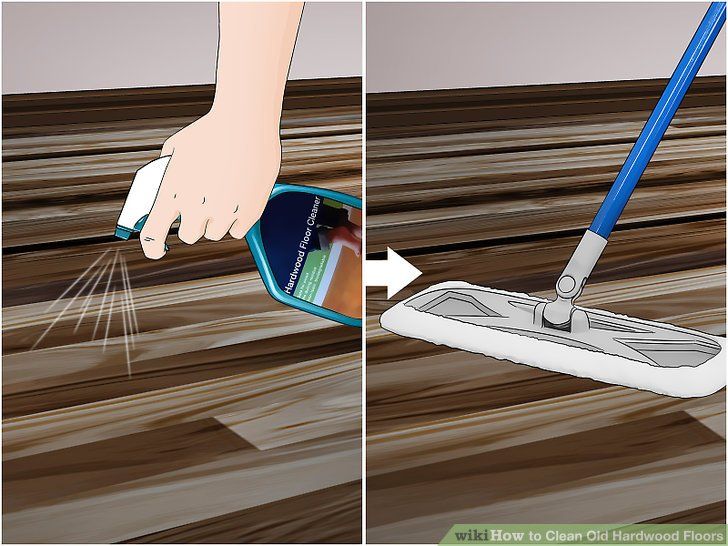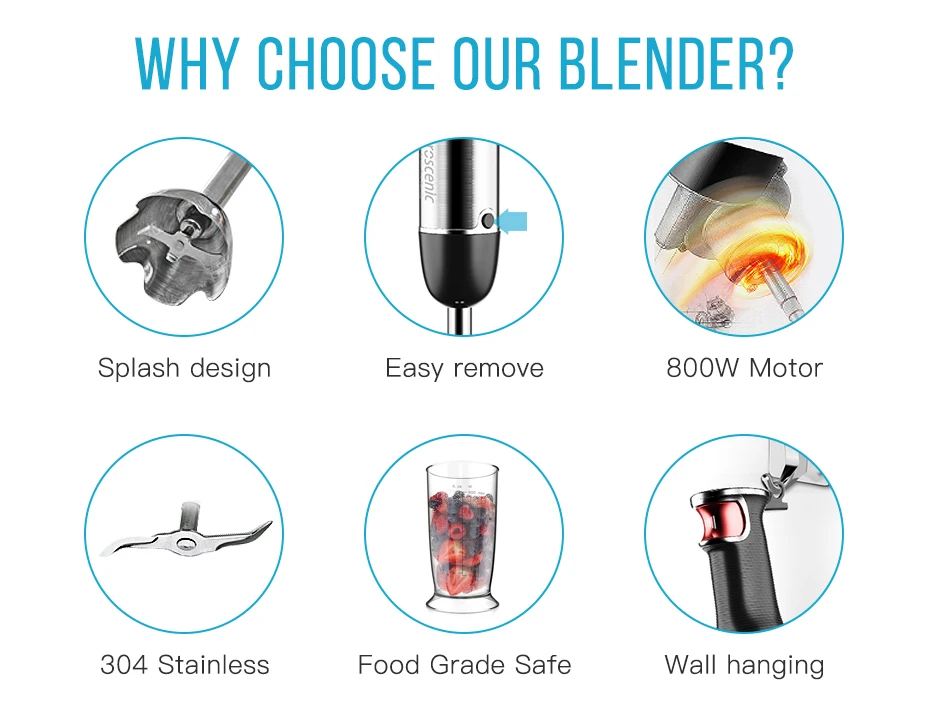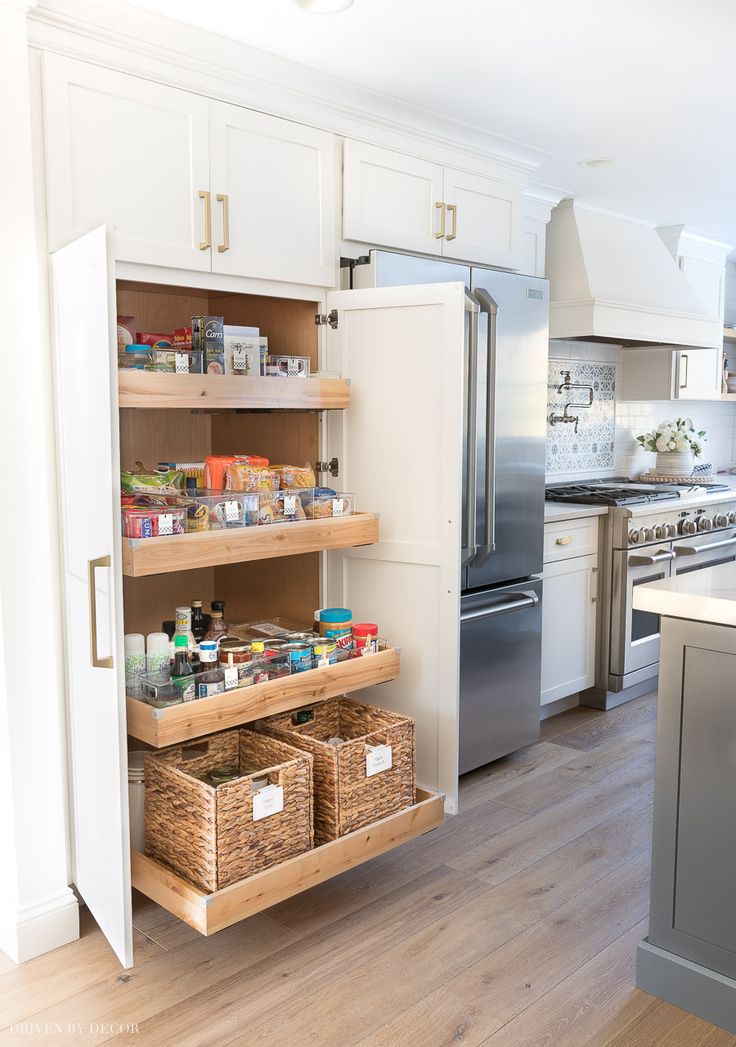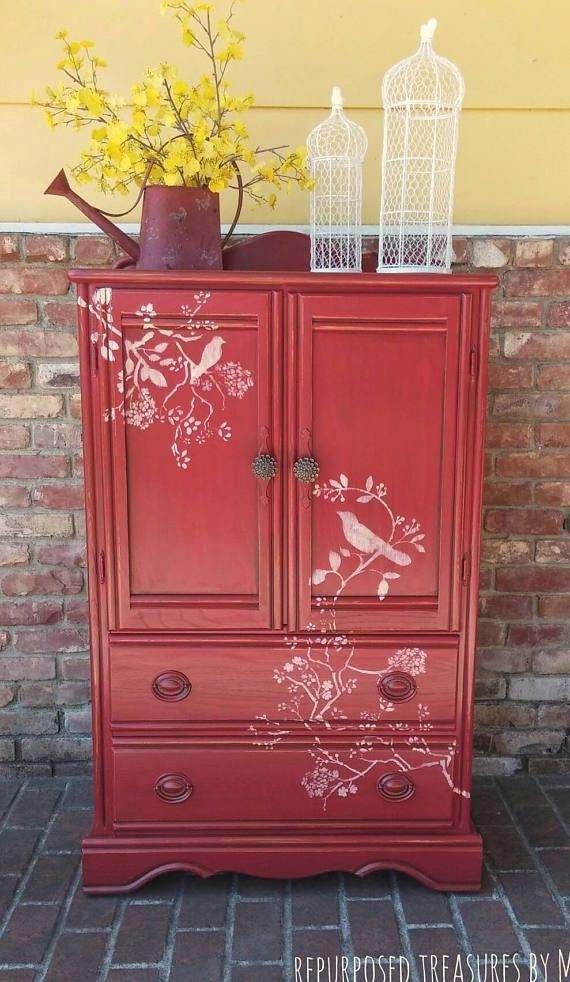Best way to clean waxed hardwood floors
Aftercare For A Waxed Floor
Wax is our preferred option for use with antique or wooden floors with a bespoke patina. Waxing will give an unrivalled depth and beauty to the floor. A significant advantage of a Wax finish is that it can be maintained and restored relatively easily and does not require specialist tradesmen to carry out this work. The property owner or cleaner can carry out both daily and periodic maintenance.
A waxed floor will never require sanding and sealing. Over time the beauty of the floor will be enhanced by scratches, scuffs, dents etc. Some say a waxed floor requires more maintenance than either Polyurethane or Oil. This is true to some extent, initially, at least. However, in the long run, wax is favourable. Wax is a “little and often” approach to maintenance.
To compare, solid wood floors and engineered wood floors sealed with either Polyurethane or Oil require very infrequent maintenance/refurbishment. However, although an Oil or Polyurethane floor seal requires less regular maintenance or restoration, the restoration is a lot more involved when it becomes necessary. It will mean inconvenience and significant cost, as this work is skilled and beyond the average homeowners’ skill or experience.
A Waxed floor in a residential situation might require application and buffing (with a rotary buffing machine) two or even three times in its first year. This will be more frequent in a commercial setting. There is no definitive prediction on frequency, as this depends on the particulars of each project. This can be discussed with the owners/person responsible for making the best predictions.
Over time, the wax will harden, and wax applications will be required less often; buffing alone will be more common than waxing and buffing. Should the floor become dull and lose its lustre, you can apply another coat of wax and buff it. The floor will look better than when it was initially installed.
As an everyday regime, the homeowner or cleaner simply needs to sweep with a soft brush or vacuum. Never wet mop a waxed floor! If care is exercised, moist cloth and a PH-neutral cleaning solution can be used to clean a waxed floor.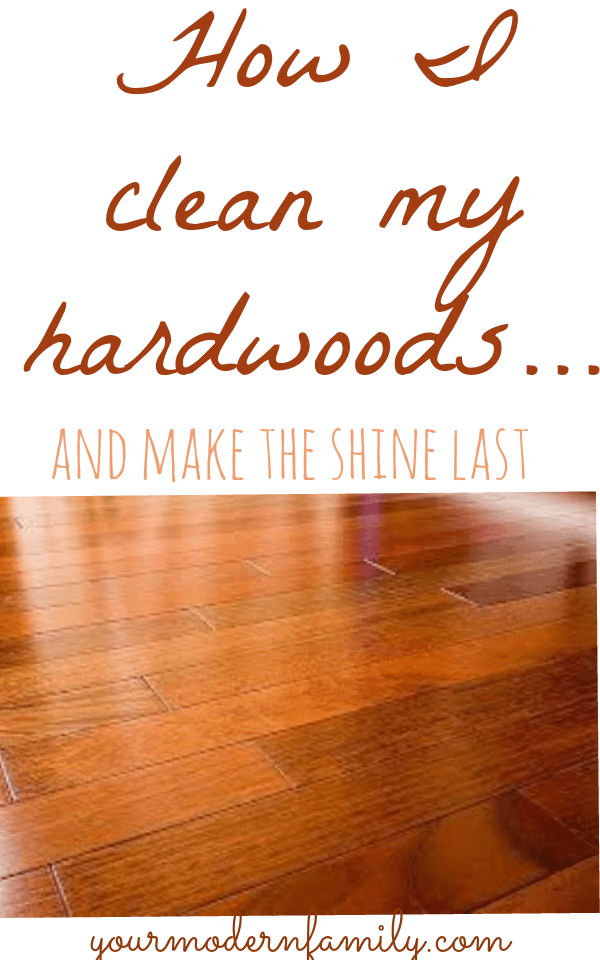 This doesn’t mean a wet mop. A moist cloth can be used, but a wet mop is terrible.
This doesn’t mean a wet mop. A moist cloth can be used, but a wet mop is terrible.
If a waxed floor is cleaned with a moist cloth, the floor needs to be dried and buffed off immediately (As you clean) with a dry towel.
By this, I mean buff dry with a towel as you go rather than cleaning the entire area with a moist cloth and then drying off. The cleaner needs to ensure that no spillages are left and to take care that the bottom of the bucket containing the warm water and cleaning solution is not placed directly onto the waxed floor (This is because it will inevitably be wet and could lead to rings/stains on the floor).
What also needs to be borne in mind is that cleaning in this way will remove the layers of wax over time. So if a regular wax application is not taking place also, the wax could eventually be entirely removed. There is a cleaning agent within Mylands wax so that when waxing and buffing a floor, it receives an excellent clean simultaneously.
Some practical tips for a waxed floor are as follows:
- Water/spillages, if wiped off the surface of a waxed floor relatively soon after taking place, will not cause an issue, but don’t allow water/spillages to sit on the surface for a prolonged period or the floor will mark.

- Don’t use general household cleaners, which are aggressive and will strip the wax.
- Don’t allow the floor to go indefinitely without the application of wax.
- Place a good doormat at exterior entrances to ensure water is removed from shoes as you enter the property.
- Domestic spray polish can be used to clean a localised spillage…..wine, jam etc… Ensure it is a beeswax based rather than silicone. Be careful not to use this method on stairs as it can make them slippery
- Avoid wet-mopping floors with water and using household cleaners, as this can strip the wax coat off or damage the wood.
- To keep dust at bay before it dulls the finish, dry mop waxed floors as often as necessary with a microfiber cloth pad or vacuum-clean with a dust brush attachment.
- Ensure spills are cleaned up promptly with a water-dampened cloth, then wipe dry to prevent any permanent staining or damage.
- Place moisture-absorbing mats at the foot of exterior entrances to prevent dirt and moisture from being tracked in.
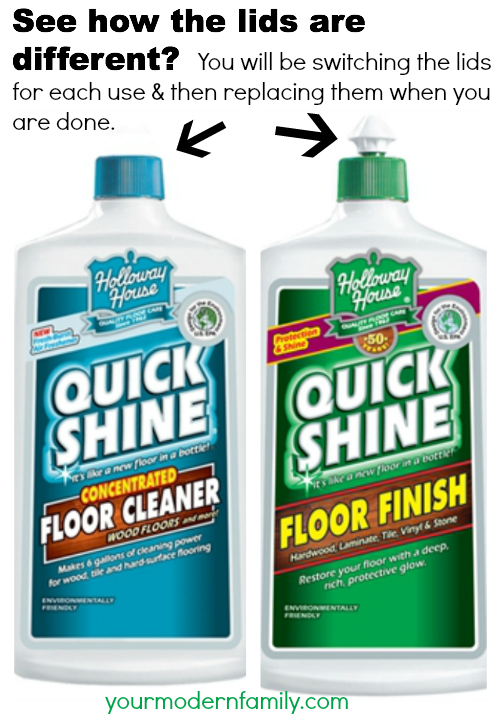
- To prevent dents, lift furniture across the waxed hardwood floors rather than dragging it.
To wax and buff, apply the wax with a rotary buffing machine. Place a small amount of wax on the floor, then buff evenly (A golf ball-sized dollop will cover about a square yard). Allow about 30 minutes to dry, then buff until a lustrous shine is apparent (It’s not complicated!). Do not to over-wax the floor. If the floor dulls, try buffing instead. Avoid wax build-up under furniture and other low-traffic areas by waxing less often in these areas. Any water, wine, spillages etc. should be cleaned immediately.
If the wax finish is discoloured by spillages which have not been cleaned up immediately or have dirt build-up, work area with wax using fine steel wool to remove grime and old wax. Wipe the floor clean, let it dry for about 30 minutes, and then buff.
Waxing Hardwood Floors 101: Benefits and Pro Tips
Photo: istockphoto.com
Hardwood floors add classic elegance to your home—but not when they’re dull, dinted, or dingy.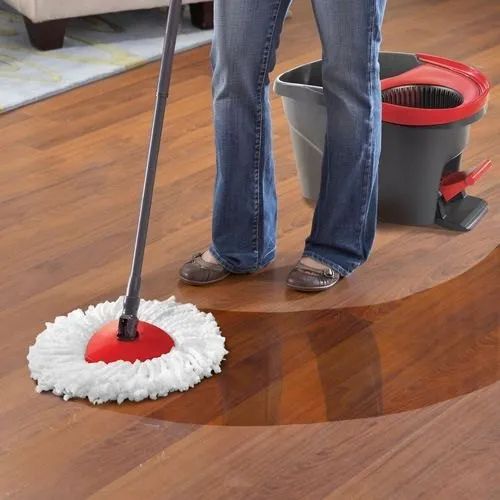 Fortunately, waxing hardwood floors is an economical, tried-and-true way to restore their gleam and prolong their life. Read on to learn the technique for applying a high-performing wax finish that will look so grand, you’ll be walking on air!’
Fortunately, waxing hardwood floors is an economical, tried-and-true way to restore their gleam and prolong their life. Read on to learn the technique for applying a high-performing wax finish that will look so grand, you’ll be walking on air!’
Popularized in the 1940s, waxing is a floor finishing technique in which clear or colored wax, made of a blend of solvents and synthetic and/or natural waxes like beeswax or carnauba, is applied to a hardwood floor in a thin layer and then buffed to a shine. As the solvents in the wax evaporate, the wax hardens into a protective seal that confers a host of benefits:
- Increases stain resistance: The wax seal limits the absorption of spills to keep floors from staining.
- Minimizes minor imperfections: Wax fades or eliminates the appearance of superficial scratches, dings, and scuffs marks.
- Preserves underlying finishes: Wax acts as the first line of defense against spills, dust, and dirt, preventing them from encroaching on underlying finishes, such as oil, and enabling the underlying finish to last longer.

- Prolongs floor life: The increased hardiness of waxed floors allows them to potentially last years longer than un-waxed floors if regularly maintained.
- Boosts beauty: Clear wax lends a shiny look and a glossier feel that vacuuming or mopping alone can’t achieve. Colored waxes, available in hues on the brown spectrum, offer these same benefits plus an attractive tint that gives floors an even richer, deeper patina.
That said, wax offers only limited resistance to deeper dents or gouges, and does little to ward off warping or bulging from widespread moisture exposure due to leaks or minor floods. Wax should be considered as a top coat—a final layer of protection, not the only protective finish, on a hardwood floor.
Advertisement
Photo: istockphoto.com
Is it good on all floors?The best candidate for waxing is a hardwood floor that was previously treated with a penetrating wood sealer, lacquer, varnish, shellac, or oil, as wax can bolster the protective properties of these finishes. However, you can also wax unfinished floors.
However, you can also wax unfinished floors.
Never wax urethane-finished floors (which could prevent them from being effectively recoated with urethane; instead, use polish) or those labeled “no-wax,” such as no-wax linoleum or vinyl designed to look like wood (they come with a factory coating that doesn’t require waxing).
Waxing is also only suitable for hardwood floors in good structural condition; that is, with no significant chipping, gouging, discoloration, warping, or bulging. If your hardwood is plagued with these problems, replace or repair affected floorboards (e.g., sand away discoloration or fill gouges with wood filler) before waxing hardwood floors.
Refinishing your floors?
Some jobs are better left to the pros. Get free, no-commitment estimates from licensed flooring contractors near you.
Find local pros
+What type of wax should I use?
Make sure to use the appropriate wax for hardwood floors:
- Either a solid paste wax or a liquid wax: Solid paste wax, sold in cans (starting at $9.
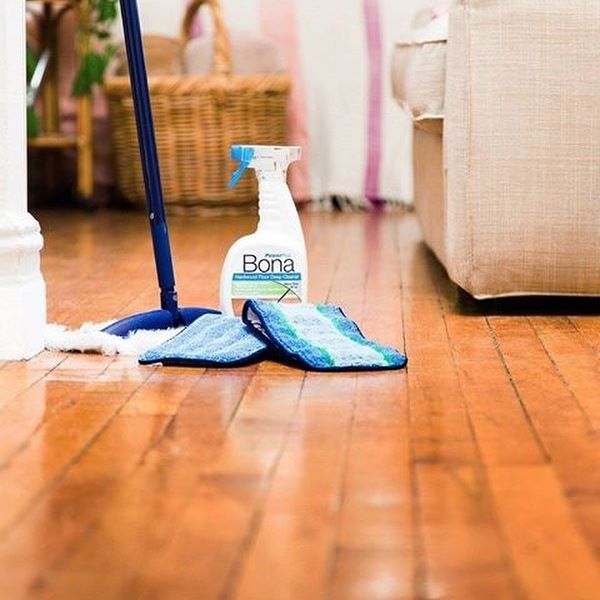 98 per 16 ounces from brands like Minwax on Amazon), usually has more wax and less solvent. This imparts a thicker consistency that must be applied by hand with a cloth but requires fewer coats. Liquid wax, available in cans or bottles (starting at $13.74 per 32 ounces from brands like Rust-Oleum on Amazon), contains more solvent, so has a thinner consistency and can be applied by mop, but demands multiple coats.
98 per 16 ounces from brands like Minwax on Amazon), usually has more wax and less solvent. This imparts a thicker consistency that must be applied by hand with a cloth but requires fewer coats. Liquid wax, available in cans or bottles (starting at $13.74 per 32 ounces from brands like Rust-Oleum on Amazon), contains more solvent, so has a thinner consistency and can be applied by mop, but demands multiple coats. - Labeled for use on floors: Steer clear of waxes labeled exclusively for use on furniture, as they harden into an ultra-slick coat that makes floors slip-prone.
- Solvent-based: Avoid water-based or acrylic waxes on hardwood floors; they can cause finished floors to take on a white tinge, or damage unfinished hardwood floors.
- Buffable: Look for traditional waxes that must be buffed after application; eschew one-step (i.e., “no-buff”) waxes, as dirt readily clings to them.
Photo: istockphoto.com
What waxing techniques achieve the best results?Use the tips below to master the three phases of waxing hardwood floors: surface preparation, application, and buffing.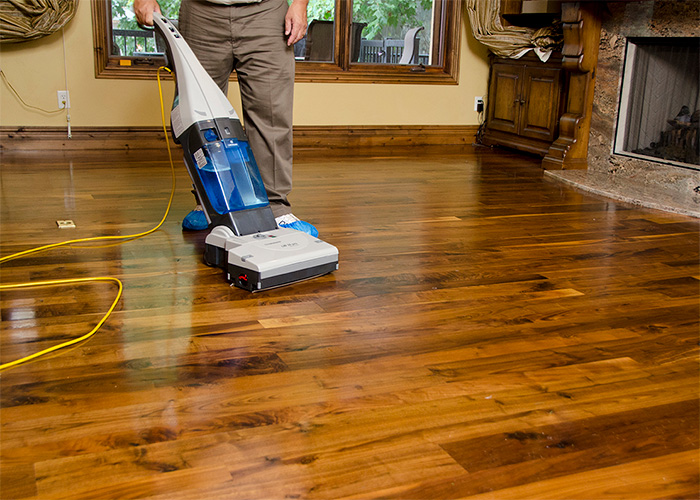
- Remove rugs and furniture from the room.
- Strip old wax, if present, by working a soft cloth dampened with mineral spirits or a commercial wax stripper such as Trewax Instant Wax Remover (available on Amazon) over two-foot sections of the floor at a time until no more wax residue comes off on the cloth. Slough off stubborn wax build-up with fine-grade steel wool.
- Dry-mop (with a microfiber cloth pad) or vacuum the floor with a dust brush attachment to eliminate dust and any loose wax build-up.
- If the floor is still dingy after dusting, use a sponge mop to remove grime. Work in three-foot sections at a time, using a store-bought hardwood floor cleaner from brands such as Bona (available on Amazon) or a homemade equivalent consisting of one quarter-cup of dish soap and a gallon of warm water. Damp mop the floor with water to remove leftover cleaner, then dry with a clean towel.
- Always wear gloves and a dust mask for protection from fumes in wax solvents.

- Get into a comfortable kneeling position before applying solid paste wax, as it should be applied by hand (knee pads ought to help). If applying liquid wax, remain standing.
- Grab a putty knife and a soft, lint-free cloth if applying solid wax. For liquid wax, enlist a sponge mop for the quickest application.
- Scoop a tablespoon of solid wax with the putty knife onto a soft, lint-free cloth. If using liquid wax, pour or squeeze a tablespoon from the can or bottle directly onto the hardwood floor, then dip the mop head into the wax.
- Working in one- to two-foot sections, spread a thin layer of solid wax with the cloth, or liquid wax with a sponge mop. Start at one corner of the room and move towards an exit, waxing hardwood floors in the direction of the floorboards. When you’ve used up your first batch of wax, apply more to the cloth or to the floor until you’ve covered the entire room.
- Let the first coat dry, which can take anywhere from 10 minutes to an hour depending on the product.

- Apply additional coats per the manufacturer’s recommendation, allowing each to dry in between. Solid paste wax generally hardens into a thicker layer of protection, so one coat is often sufficient over finished wood, or two coats over unfinished wood, whereas liquid wax usually needs two to three coats at a minimum, as each coat is much thinner.
- Let the final coat of wax dry just until hazy; at this point, it’s ready to buff.
Photo: istockphoto.com
Buffing:- Enlisting a towel for solid wax, or a sponge mop with a terry cloth head for liquid wax, rub the cloth, or glide the mop, over two-foot sections of the floor at a time. Start in the same corner of the room where you began and move in the direction of the wood grain, buffing to the desired luster.
- Employ an electric floor buffer/polisher (rental from Home Depot starts at $30 for a half day) to speed up the process of buffing either solid or liquid wax.
- Leave the freshly waxed floor undisturbed for eight hours before stepping on or replacing furniture.
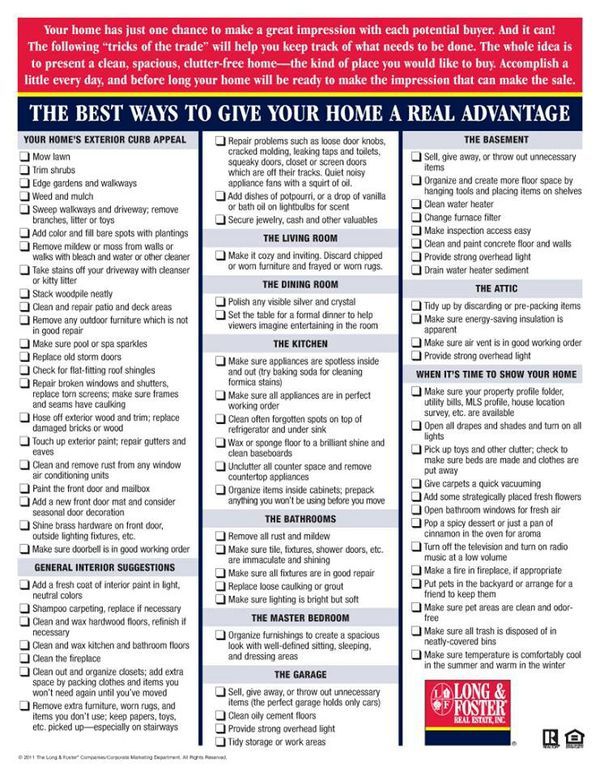
How can I keep waxed hardwood floors looking great?
Follow these tips to prolong the life and luster of your waxed hardwood:
Advertisement
Photo: istockphoto.com
- Re-wax floors at the interval recommended by the manufacturer. Generally, solid wax coats can last up to two to five years, and liquid wax coats between one to two years. If no re-waxing interval is given, wipe a cloth dampened with mineral spirits over a small section of your floor and inspect it. If the cloth is clean with no whitish or colored residue, no wax remains, so it’s time to re-wax.
- Avoid applying fresh wax before the old wax coat has worn off, as over-waxing hardwood floors can result in unsightly wax build-up.
- In between waxings, fade superficial imperfections by buffing floors using the tips above.
- Weekly dry-mop waxed with a microfiber cloth pad, or vacuum with a dust brush attachment, to keep dust at bay.
- Avoid wet-mopping large areas of the waxed hardwood floor with water; it can cloud the wax coat or damage the wood.

- Wipe up spills as soon as they occur with a water-dampened cloth, then wipe dry.
- Remove stains or discoloration by working hardwood floor cleaner into the offending spot with a cloth. Use a water-dampened cloth to remove the leftover cleaner, then dry with a clean towel.
- Lay rugs or mats at the foot of doorways near waxed hardwood floors to keep dirt from being tracked in.
- Lift, rather than drag, furniture across the waxed hardwood floors to avoid dents.
Refinishing your floors?
Some jobs are better left to the pros. Get free, no-commitment estimates from licensed flooring contractors near you.
Find local pros
+How to remove stains from parquet
Parquet is a very beautiful and environmentally friendly flooring that justifies its price. The main advantages of parquet include, first of all, its natural warmth and attractiveness, the fact that it can fit into almost any interior design. At the same time, on parquet, as well as on any other floor covering, pollution inevitably appears over time, which is quite difficult to remove. And if you haven’t cleaned the parquet floor for a long time, then it’s time to devote some time to this. How to remove stains from parquet, what products are the most effective and what you should know before proceeding with the procedure? nine0003
And if you haven’t cleaned the parquet floor for a long time, then it’s time to devote some time to this. How to remove stains from parquet, what products are the most effective and what you should know before proceeding with the procedure? nine0003
How to remove spots from the parquet
Simny spot on the floor
Content of Article
- 1 A little useful recommendations
- 1.1 Prices for the Tarkett Parquet
- 2 We remove different spots
- 2.1 GUBLICH or chewing Wax
- 2.2 Oil
- 2.3 Corny
- 2.4 Urine
- 2.5 Color
- 2.6 Smol
- 2.7 Pencils
- 2.8 soles of rubber
- 2.9Lipstick
- 2.10 Nail polish stains
- 3 What should I do with dark spots?
- 3.1 Video - How to properly clean the parquet
- 4 Remove the stain from the felt-tip pen, permanent marker
- 4.1 Method No1. Isopropyl alcohol
- 4.
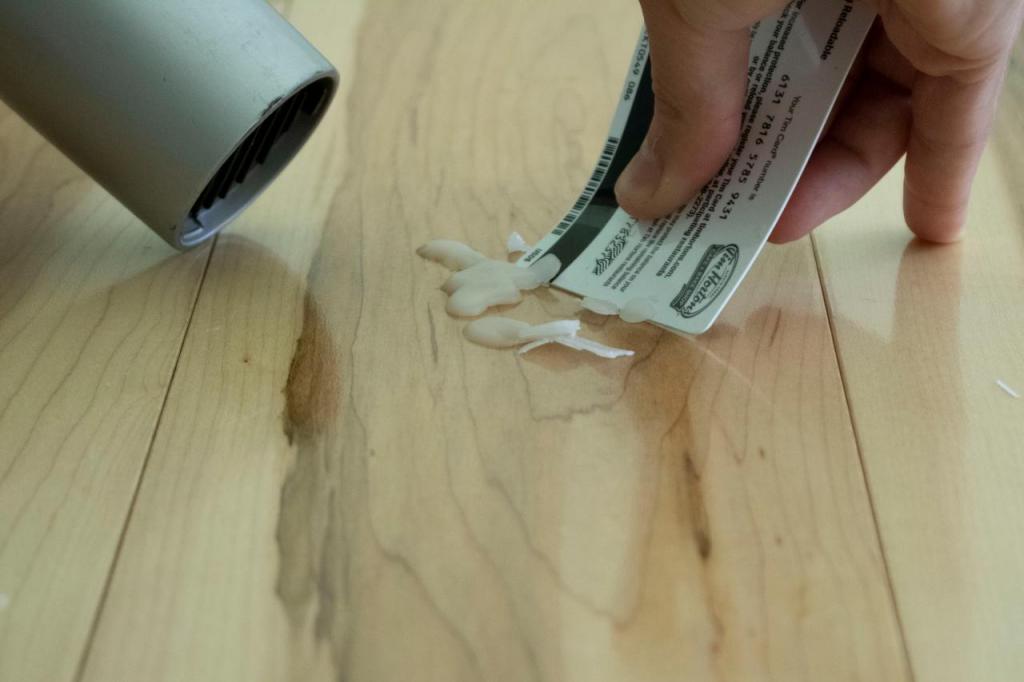 2 Method No2. Nail polish remover
2 Method No2. Nail polish remover - 4.3 Method No3. Marker Expo
- 4.4 Method No.4. Toothpaste
- 5 Remove grease stains
- 6 Remove blood stains from parquet
- 6.1 Method No1. Uncoated parquet floor
- 6.2 Method No2. Waxed parquet
- 6.3 Method No3. Parquet with urethane/polyurethane coating
- 7 What about parquet floor care products?
- 7.1 Prices for parquet care Loba Parkettcare
- 7.2 Video - Washing parquet and laminate
- 7.3 Video - Berger L91 Cleaner, an effective parquet care product
Some useful tips
Before you start removing stains from parquet, read the tips below to help extend the life of your flooring and make cleaning more efficient.
- Only use a soft cloth (ideally made of microfiber) to clean the parquet. With such a rag, you certainly will not leave scratches on the coating that can ruin its appearance.
Microfibre floor cloth
- Put on the legs of furniture that you plan to move in the process, special soft caps to avoid scratching the floor surface.
 nine0002 Caps for furniture legs
nine0002 Caps for furniture legs - It is better to give preference to special cleaners for parquet (these are detergents with a gentle effect).
Cleaner for parquet Koti Granta
- Do not use gasoline or other aggressive solvents.
Please note! In addition, if you want to effectively remove the stain, it is better not to add soap to the water - the fact is that it will leave behind white stains, and they, in turn, will also have to be removed. nine0003
Prices for Tarkett parquet range
Tarkett parquet
Removing various stains from parquet
First, find out what is the origin of the stains that you have to remove. After all, the method used will depend on this - each stain is removed by different methods / means, including folk ones. Let's get acquainted with this dependence in more detail.
Parquet care
Gum or wax
To remove such a stain, it must be cooled in advance (or even better - frozen).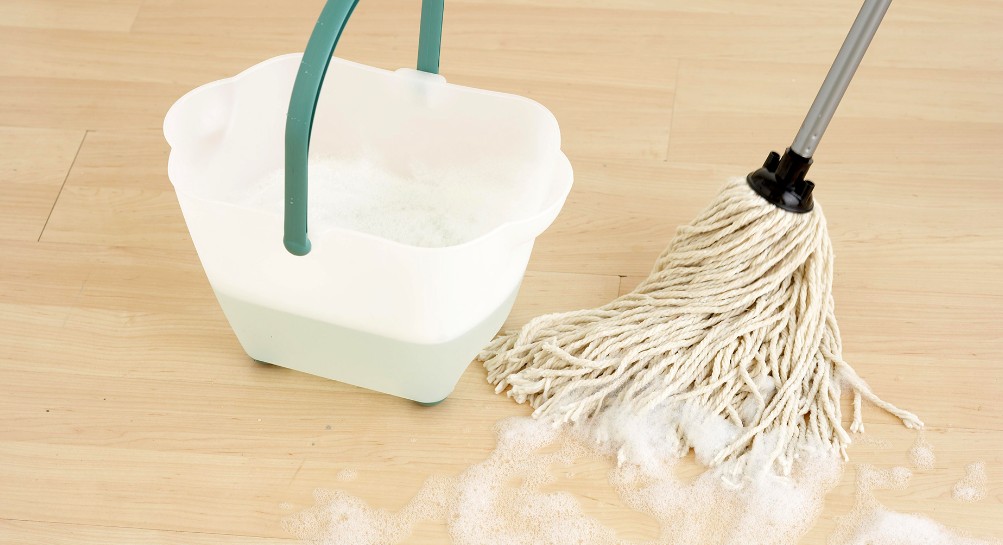 Lay some newspaper on the spot and place a large bowl of ice on top. Once the stain has frozen, carefully scrape it off using a suitable plastic or metal object. Try not to scratch the floor while doing this. nine0003
Lay some newspaper on the spot and place a large bowl of ice on top. Once the stain has frozen, carefully scrape it off using a suitable plastic or metal object. Try not to scratch the floor while doing this. nine0003
Gum can be a serious problem
Oil
A fresh stain can be wiped off with a sponge soaked in detergent. If the stain is ingrained, you will have to use a solvent (only without gasoline) or an aggressive agent for treatment. It is possible that the stain will need to be processed several times to obtain the desired result.
Washing parquet with a sponge
Ink
Ink stains on parquet are not a particular problem, because they can be easily washed off with any quality detergent. In the absence of the latter, you can use ordinary vinegar to remove the stain - rub it on the desired area of \u200b\u200bthe floor, and then remove the remaining ink. nine0003
Ink stain removal
Urine
Urine stains left by children or pets on the floor can also be removed with any available detergent.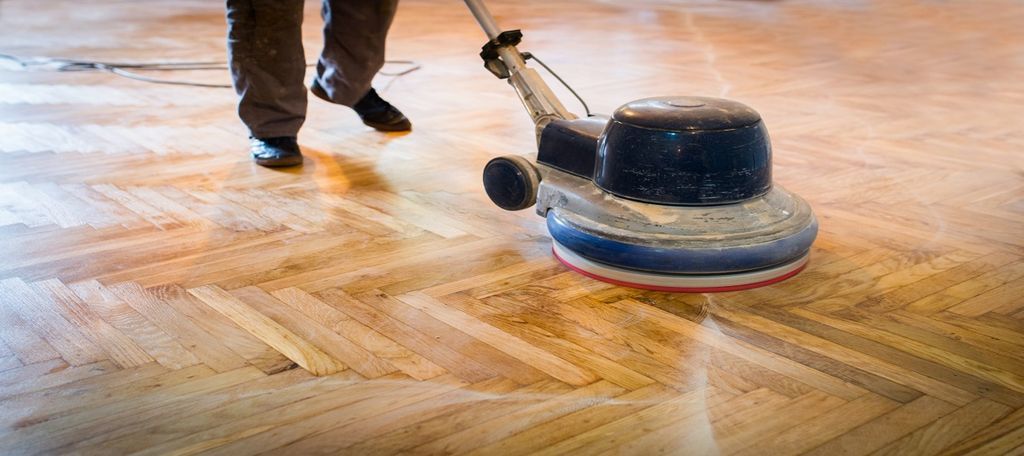 Those stains that have already managed to be well absorbed into the wood, you can try to remove with the same tool, additionally adding a 10% bleach solution to it.
Those stains that have already managed to be well absorbed into the wood, you can try to remove with the same tool, additionally adding a 10% bleach solution to it.
Dog urine stain
Paint
After cosmetic repairs in the apartment, there are often peculiar reminders - paint stains on the floor. To remove them, you can use a rag that is soaked in a 30% alcohol solution. nine0003
Paint on parquet
Resin
Just like chewing gum, first freeze it and then carefully scrape it off. Use a resin solvent such as 3
-R Pufas Glutoclean to remove stain residue.Parquet cleaner and care
Pencils
If you have small children, you know very well how they love to decorate walls and floors with their "arts". The procedure for removing such drawings is nothing complicated - just erase them with white spirit. In the absence of the latter, you can use a toothpaste containing fluoride. nine0003
White spirit
Rubber soles
Shoes with such soles often leave dark marks on the floor. To remove them (traces), you can use a simple clerical eraser.
To remove them (traces), you can use a simple clerical eraser.
Lipstick
Lipstick stain can be removed with the same sponge and detergent. If the stain is old enough, it is recommended to first warm it up with warm water.
Parquet cleaning
Nail polish stains
It contains substances that form a close bond with the base, and therefore the removal of such a stain is a rather difficult undertaking. First, wet the stain with acetone or nail polish remover, then gently rub it with a hard sponge.
Acetone
What to do with dark spots?
If you find dark areas on the parquet, it means that the wood of the planks in these places has simply lost its appearance. If so, then dark spots can be removed only with the help of local cycling. nine0003
The main stages of parquet floor scraping
Video - How to properly clean parquet
Removing a stain from a felt-tip pen, permanent marker
These stains can also be removed using one of the methods described below.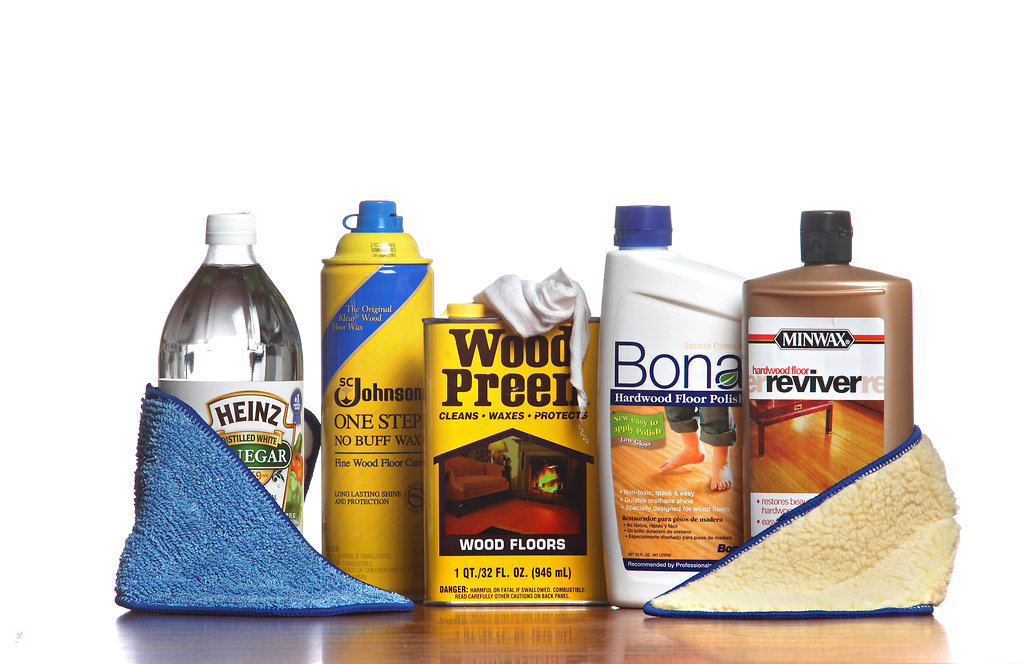
Method No1. Isopropyl alcohol
Step one . Pour a small amount on a paper towel, then begin to rub the stain. As a rule, it takes only a couple of minutes to completely remove the latter. nine0003
The stain is wiped with alcohol
Second step . Use light pressure to remove the stain. It usually disappears after intense friction.
Use a little effort to remove the stain
Method no2. Nail polish remover
Step one . Apply a thin layer of this liquid to the desired area of the parquet floor.
Liquid is applied to the stain
Second step . After that, using a paper towel, intensively wipe the stain. nine0003
The stain is wiped off with a paper towel
Method No3. Expo marker
Step one . To get started, take this marker and draw lines with it along the spot you want to remove.
Lines are drawn with the Expo marker
Second step .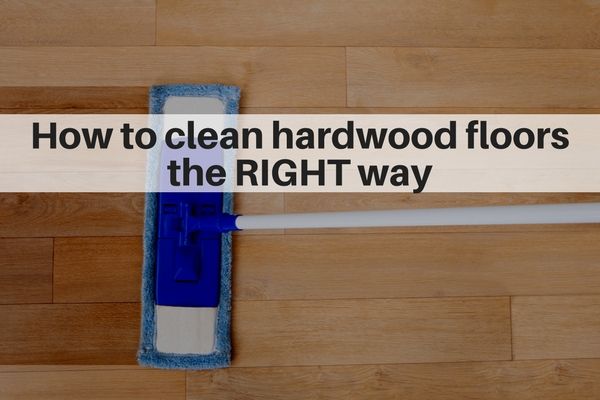 Then wipe the stain, again, with a paper towel. Such a procedure should help with stain removal even from a permanent marker.
Then wipe the stain, again, with a paper towel. Such a procedure should help with stain removal even from a permanent marker.
Wipe stain with paper towel
Method No4. Toothpaste
Step One . Take your toothpaste and apply it to the desired area of the hardwood floor. It will work as an abrasive, so you can easily wipe off the stain using a brush.
Toothpaste is applied to the stain
Second step . Next, take a brush (not too hard) and start cleaning the stain.
Brush stain removal
Third step . Then wipe the desired area of the floor with a damp cloth or rag. If you do everything right, the parquet will look like before
Wet cloth used
Table. Replacing the parquet board is an extreme measure.
| Steps, photo | Description of steps |
|---|---|
| Step one | If none of the methods described above gave any result, all that remains is to replace the fragment (if the stain really affects the attractiveness of the parquet). |
| Step two | To do this, remove the soiled board to install a new one instead (the same or, as an option, as similar as possible). nine0272 |
| Step three | Sand the new board well. Apply a layer of stain or varnish on it in the same color as the rest of the floor. So the board will not stand out much. |
Remove grease stains
They often appear on parquet. For example, greasy food can slip out of your hands and fall right on the floor. To remove such pollution, use our tips.
- First, take a small amount of washing powder and dilute it in warm water. Rub the resulting product in the right place and wait three to four hours, then wash the floor with clean warm water. nine0014
- You can use sandpaper to clean up this stain, but you need to be very careful when doing this.
- Take magnesia powder, sprinkle it on the stain and wait a few hours for it to soak in.
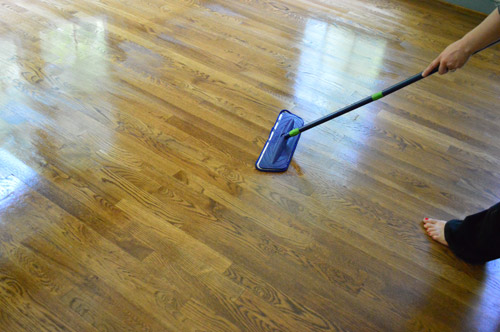 Next, gently sweep the powder off the floor and wash it.
Next, gently sweep the powder off the floor and wash it.
Magnesium sulfate
If all else fails to remove the greasy stain, you can rub it with turpentine, wait two to three hours and wash the floor thoroughly. Of course, there are other methods for removing greasy stains from parquet, but those described above are the most effective, and therefore the most popular. nine0003
Removing blood stains from parquet
Such stains are easier to remove if they are fresh; if the blood is deeply absorbed into the tree, you will have to work hard. In any case, first you need to determine the type of parquet.
Method No1. Uncoated parquet floor
This type of floor easily absorbs moisture if not cleaned regularly. Removing blood from such parquet can be quite a challenge.
Step one . First, blot the stain with a paper towel or clean cloth. It is not necessary to rub, otherwise the stain will expand and penetrate deep into the wood. nine0003
nine0003
Blot the stain with paper towel
Second step . Take baking soda and sprinkle it on top of the stain.
Sprinkle baking soda on the stain
Third step . Next, take a brush, soak it in table vinegar and try to lightly scrub the stain.
Brush soaked in table vinegar
Fourth step . Now wipe the floor with a dry, clean cloth. If the stain is not completely removed, you can use hydrogen peroxide. At the same time, be careful, because peroxide can bleach wood (especially if the parquet floor is dark). nine0003
Wipe the surface with a dry, clean cloth
Step Five . Apply a small amount of hydrogen peroxide to a white cloth.
Hydrogen peroxide
Sixth step . Rub the stain gently.
The stain is gently rubbed
Step seven . After that, wipe the desired area of the floor with a damp cloth. Rinse the coating well to remove all stain residue.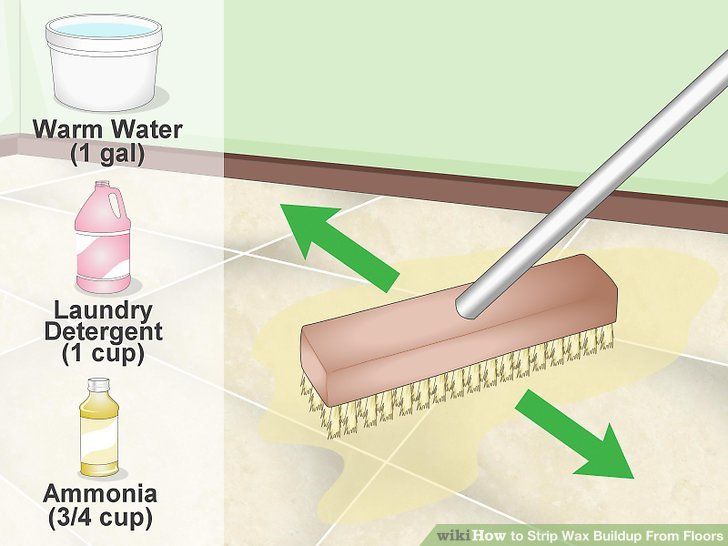
Next use a damp cloth
Step eight . In the end, it remains only to dry the parquet, which will require a dry and clean rag / towel.
The parquet is wiped dry
Method No2. Waxed parquet
Some types of parquet are covered with wax, which, being absorbed into the wood, protects it from damage/moisture.
Step one . Take a paper towel or a clean rag and wipe the stain.
Wipe the blood stain with a clean cloth
Step two . Mix in a bowl 1 cup cold water and 0.5 tbsp. spoons of dishwashing detergent. Make a sort of soap solution.
Water and dishwashing liquid
Third step . Take a rag, soak it in the resulting solution.
Wet cloth with solution
Fourth step . Wipe what is left of the stain with a damp cloth.
Wiping off the remaining stain
Step Five . Moisten a clean cloth with water and wash away any remaining stain. nine0003
nine0003
Wipe off residue with a damp cloth
Step six . It remains only to dry the desired area of \u200b\u200bthe floor using a dry cloth or towel. See if the stain is completely removed.
Wipe the parquet with a dry towel
Step seven . If not, take a metal washcloth (prefer the most gentle one, number 0000) and dip it into liquid wax.
Liquid wax and steel wool
Step eight . Lightly wipe the parquet with a washcloth. Tellingly, the wax layer should be removed. Because of this, the parquet may fade, but then everything can be fixed with liquid wax.
The stain is wiped with a washcloth
Step nine . Take a soft cloth and wipe the surface with it.
The parquet is wiped dry
Tenth step . Apply wax at the end. If necessary, you can polish the parquet.
Wax or polish the parquet if necessary
Method No3.
 Parquet with urethane/polyurethane coating
Parquet with urethane/polyurethane coating These substances are used to protect the parquet floor from negative external influences and are distinguished by the fact that they remain in the wood for quite a long time.
Step one . Moisten the sponge and wipe off the stain with it.
Wet sponge
Second step . Periodically rinse the sponge, wipe the area for as long as it takes for the stain to disappear. nine0003
Wipe the stain with a damp sponge
Third step . Take a damp cloth and wipe the parquet with it. Be very careful to get rid of any leftover stains.
Removing blood residue with a damp cloth
Fourth step . Then wipe the floor with a dry cloth/towel. If there is still blood left, proceed to the next steps.
Wipe the parquet with a dry towel
Step Five . Moisten a rag with white spirit, wipe the stain with it. This should be done very carefully! nine0003
White spirit and a piece of cloth
Step six .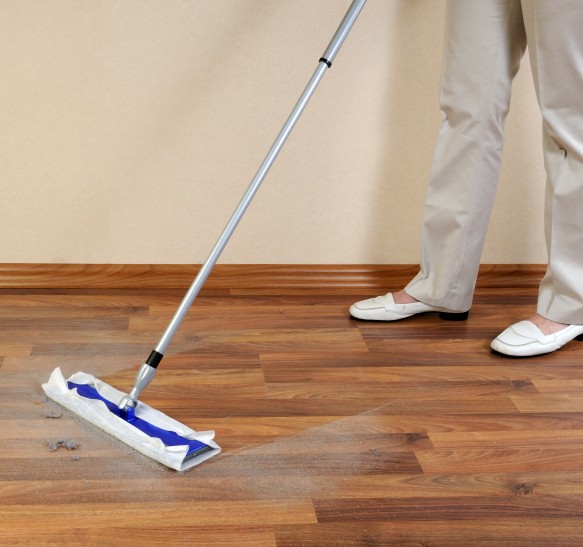 Wipe the parquet again with a dry, clean cloth. If traces still remain, you can repeat the step, but now use the same steel wool.
Wipe the parquet again with a dry, clean cloth. If traces still remain, you can repeat the step, but now use the same steel wool.
Wipe the surface with a clean cloth
Step seven . Soak a washcloth in white spirit, gently wipe the stain. It is important that your movements are parallel to the direction of the fibers. Remove as much coating as needed to completely eliminate the stain. nine0003
White spirit and steel wool
Step eight . Wipe the area clean with a soft cloth.
Wipe the parquet surface clean with a soft cloth
Step nine . After a day, apply a new coating to the treated area, if necessary.
After 24 hours, re-coat the surface to be treated if required
Please note! Never apply ammonia to parquet floors. The fact is that the color of the coating may be lost after the use of ammonia! nine0003
What about parquet floor care products?
Of course, in addition to those described above, if professional parquet floor care products (these are the parquet cleaners mentioned earlier). Let's get acquainted with some of them in more detail.
Let's get acquainted with some of them in more detail.
Berger Bio Soap - cleaner for parquet and parquet boards
Table. Overview of popular parquet cleaners.
| Name, photo | Brief description |
|---|---|
| Aqua Sport Wood Flor Cleaner | Fast drying, does not require rinsing, can be used both for regular cleaning and for removing grease stains from the floor. |
| Loba ParkkettCare | Inexpensive enough to remove dirt and greasy stains. At the same time, it is important that a polish is applied after using the product. |
| Rubi | Neutral, daily use, made in Spain, citrus fragrance. |
| Glutoclean Pufas | An effective cleaner that quickly removes oil, grease and dirt stains, as well as getting rid of heel and shoe marks. |
Prices for the parquet care product Loba Parkettcare
Loba Parkettcare
As you can see, stains of almost any origin can be removed from parquet, since there are many means for this.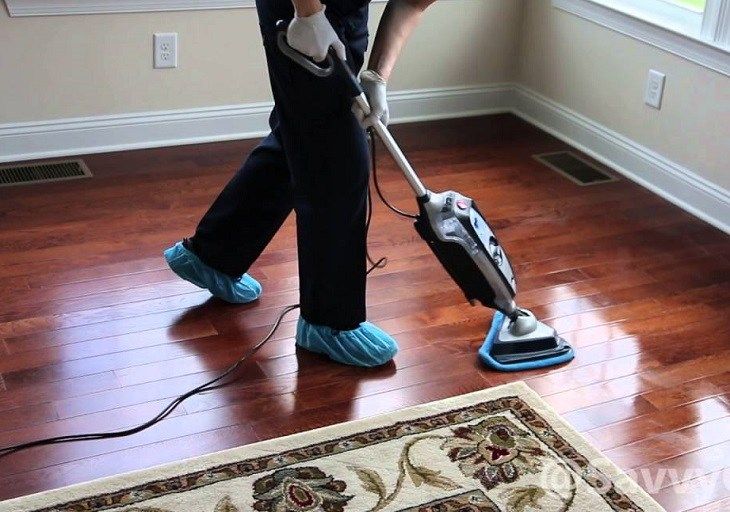 However, care must be taken when working, otherwise the coating may be damaged. Good luck with your work! nine0003
However, care must be taken when working, otherwise the coating may be damaged. Good luck with your work! nine0003
Video - Cleaning parquet and laminate
Video - Berger L91 Cleaner, an effective parquet cleaner
The best way to clean parquet floors
Regular cleaning is a must to maintain the rugged beauty of wood floors. Because different floor finishes have unique care requirements, the best way to clean hardwood floors will depend on the type of finish, not the type of wood (e.g. cherry, maple, oak) - use the wrong method and you could cause damage! nine0003
Read on to find out how to determine your floor finish and then select the best appliances and supplies ideal for dust removal, deep cleaning and stain removal.
Check the finish of your floor. There are two main types of parquet floor finishes: Surface Finish and Penetrating Finish .
There are two main types of parquet floor finishes: Surface Finish and Penetrating Finish .
- surface finishes such as urethane and polyurethane form a protective waterproof barrier on the floor surface. When liquids come into contact with the surface, they accumulate rather than penetrate the wood, so it is safe to use water and water-based cleaners. The easiest way to check if your floor has a surface finish is to take a sharp knife blade and scrape off a tiny amount of finish on a small, hidden area of the floor. If the scraped material is clear, your floor probably has a surface finish. If scraping the flooring smudges but does not remove the clear material, your floor most likely has a penetrating finish. nine0014
- penetrating finishes such as linseed or tung oil soak through the surface of wood floors and are usually waxed for extra shine. These coatings readily absorb water and water can warp wood floors, so use only solvent-based cleaners instead of water-based cleaners on floors with Penetrating Finish.
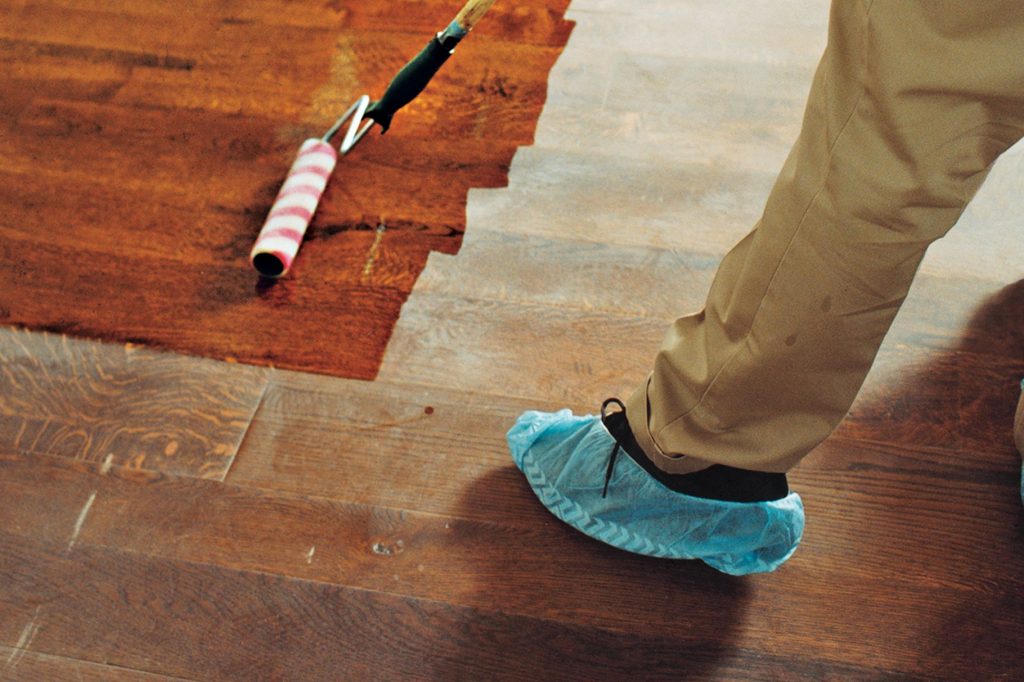
Start by removing the dust. Dry mopping, sweeping and/or vacuuming on a weekly basis is the best way to rid wood floors of light dust, dirt and buildup of pet hair. A mop with a large flat head attached with a microfiber cloth that can be removed, machine washed and reattached is best. Available in a variety of brands, these mops feature tiny synthetic fibers that penetrate the grooves of wood floors to collect and hold dust without scratching the wood. nine0003
If you are sweeping, choose brooms with exploded tips (synthetic fiber ends) to help trap collected dust in the broom head and prevent it from settling on the floor.
When vacuuming, use the floor nozzle and avoid the mallet - its rotating brush can dent wooden floors. Move the cleaning tool from one side of the floor to the other, paying special attention to the places where adjacent floorboards meet - this is a common hiding place for dust. nine0003
This procedure works on floors with any surface or penetrating finish.
Heavy dirt deep cleaning and dirt accumulation . If the hardwood floor surface still looks dull or dull after dusting, deep clean it with any pH-neutral, wax- and oil-free cleaner, store-bought or with a homemade solution consisting of a quarter cup of dish soap and 4 liters of warm water. .
Wet a sponge mop with cleaner, squeeze out excess liquid until the mop head is damp but not dripping, then mop small areas of the floor at a time, using circular motions to draw out dirt and grime. Then rinse the mop in fresh water, wring out the excess and rinse the floor again with a damp mop to absorb any lingering cleaner. Use a soft, clean towel to dry the floor completely. nine0003
If your floor has a penetrating finish, the best way to deep clean your floor is to remove the dirty old wax and reapply fresh wax. Wipe with a clean cloth soaked in mineral spirits over small areas of the floor at a time, allowing the mineral spirits to linger for five minutes on each area before wiping with a fresh cloth lightly dampened with water; then dry thoroughly with a fresh, dry cloth.
Finally, apply a solvent based parquet wax with a soft cloth in the amount recommended by the manufacturer. Then use a cloth or an electric polisher to polish the wax in a circular motion. nine0003
Perform an appropriate deep cleaning procedure every two years, whether you see dirty buildup or not. It can be hard to notice on the floor you walk on every day, but once it's clean, you'll probably be impressed by the difference!
Scrape food stains . Remove baked-on food from surface or penetrating floors by carefully inserting the tip of a plastic knife under the bottom edge of the debris, then gently slide the knife up. Wipe the scratched area with a clean cloth lightly dampened with a few drops of water, then make a second pass with a dry cloth to collect the water. If using this technique on a floor with a penetrating finish and a small area of the wax coating is removed with a knife, reapply a drop of solvent-based wax to the area with a soft cloth, polishing it to make the area shiny and flawless.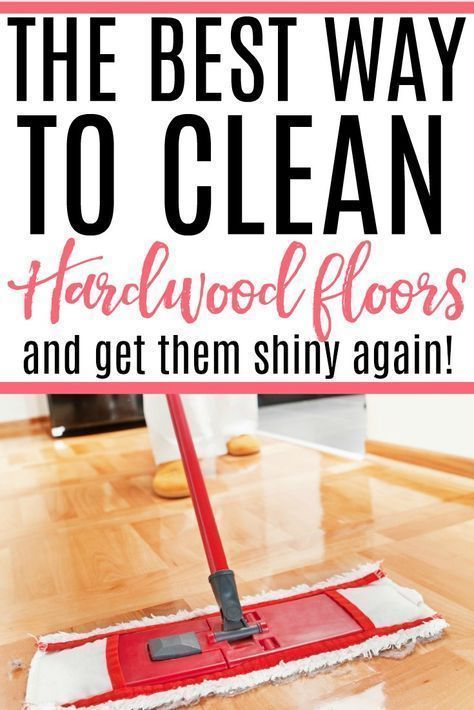 nine0003
nine0003
Fight oil stains with trisodium phosphate . Oil and grease stains on floors with surface or penetrating finishes are easily destroyed by the action of trisodium phosphate. Wearing gloves and goggles, dilute two tablespoons of trisodium phosphate in 4 liters of warm water in a large bucket. Dip the tip of a clean cloth into the solution, then apply it to the stain in gentle, circular motions. After the trisodium phosphate dissolves it, run a water-dampened cloth over the area to absorb the trisodium phosphate, then quickly dry the area with a clean cloth. nine0003
Ice for wax and gum . Dried candle wax, crayon marks and chewing gum on floors with surface or penetrating finishes are easily removed with ice. Fill the freezer with a few ice cubes, then place the chilled bag on top of the nasty buildup until it becomes brittle, then scrape it off with the edge of a plastic spatula. If the spatula removes protective wax from a penetrating floor, reapply the solvent-based wax to the scraped area with a soft cloth, then apply it to the repaired area with the cloth. nine0003
nine0003
Wipe water, ink and pet stains well . Stains left by water, ink, or pet urine are the most persistent stains. Remove them from penetrating finish floors by lightly sanding the stain with extra-fine sandpaper, then gently scrub with coarser grade “00” steel wool dipped in mineral spirits. Wipe the mineral spirits with a cloth dampened with water and then with a dry cloth to remove the water.
Apply a solvent-based parquet wax to the cleaned area with a soft cloth and buff to restore shine. Sandpaper and steel wool can degrade the surface finish, so you'll want to deal with these stains using only hardwood floor cleaner and a cleaning pad designed for finished surfaces.
Can the steam mop be used on parquet floors?
Steam cleaning is not a good choice for parquet. Although it uses a minimal amount of moisture, one of the main components of parquet is the adhesive used to glue the wood pieces together. Because the pieces are very thin and so much glue is used, the heat can cause the glue to loosen.